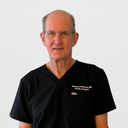Hello surgeons! I'm six months post primary rhinoplasty. After getting access to my operative report, I'm very concerned about the grafts. They are as follows: spreader grafts: (2) 1mm width X 1.5 cm X 4 mm height septal cartilage in right nasal tip: 4mm X 4 mm columellar strut: 1.2 cm length X 4mm in width alar rim grafts: (2) 1 cm length X 2.5 mm width X 1 mm thick I do have an upcoming appointment for a revision from a different surgeon. I just can't believe it. :-( Thank you!
Answers (6)
From board-certified doctors and trusted medical professionals
Dr. Steven M. Denenberg, MD

Dr. Steven M. Denenberg, MD
Board Certified Facial Plastic Surgeon
Answer
Dr. Thomas A. Mustoe, MD, FACS

Dr. Thomas A. Mustoe, MD, FACS
Board Certified Plastic Surgeon
Answer
Dr. Suleyman Tas, MD, FEBOPRAS

Dr. Suleyman Tas, MD, FEBOPRAS
Plastic Surgeon
Answer
Dr. Andrew Miller, MD

Dr. Andrew Miller, MD
Board Certified Facial Plastic Surgeon
Answer
Dr. Eric M. Joseph, MD

Dr. Eric M. Joseph, MD
Board Certified Facial Plastic Surgeon
Answer
Dr. Richard Mark Winters, MD
Dr. Richard Mark Winters, MD
Board Certified Plastic Surgeon
Answer
More Revision Rhinoplasty Questions
See all Revision Rhinoplasty Q&AWE SEND PRETTY
EMAILS
What’s trending? Who’s turning heads? Which TikTok myths need busting? We’ve got you. No fluff, no gatekeeping—just real talk. Get our free, unfiltered newsletter.